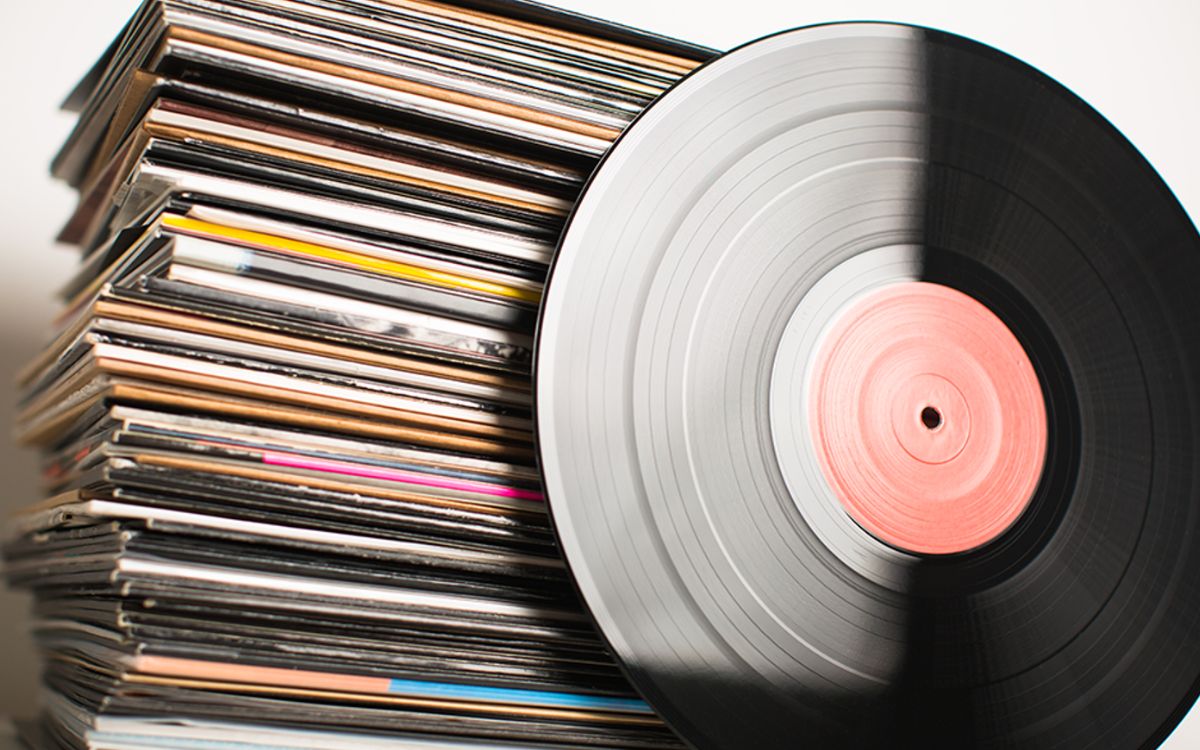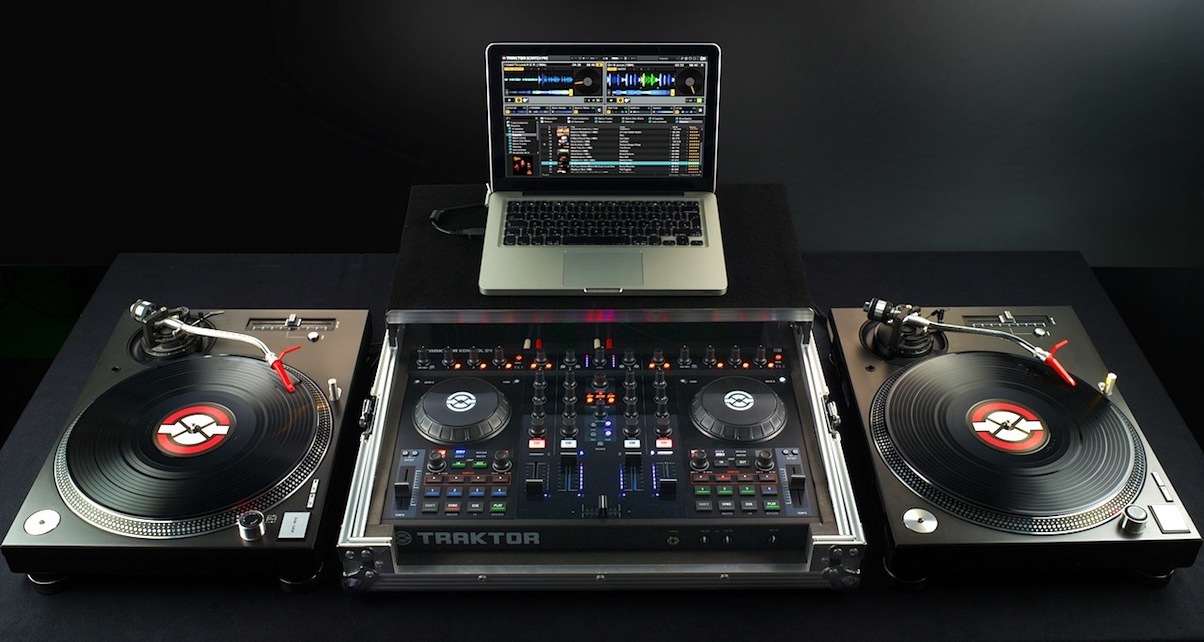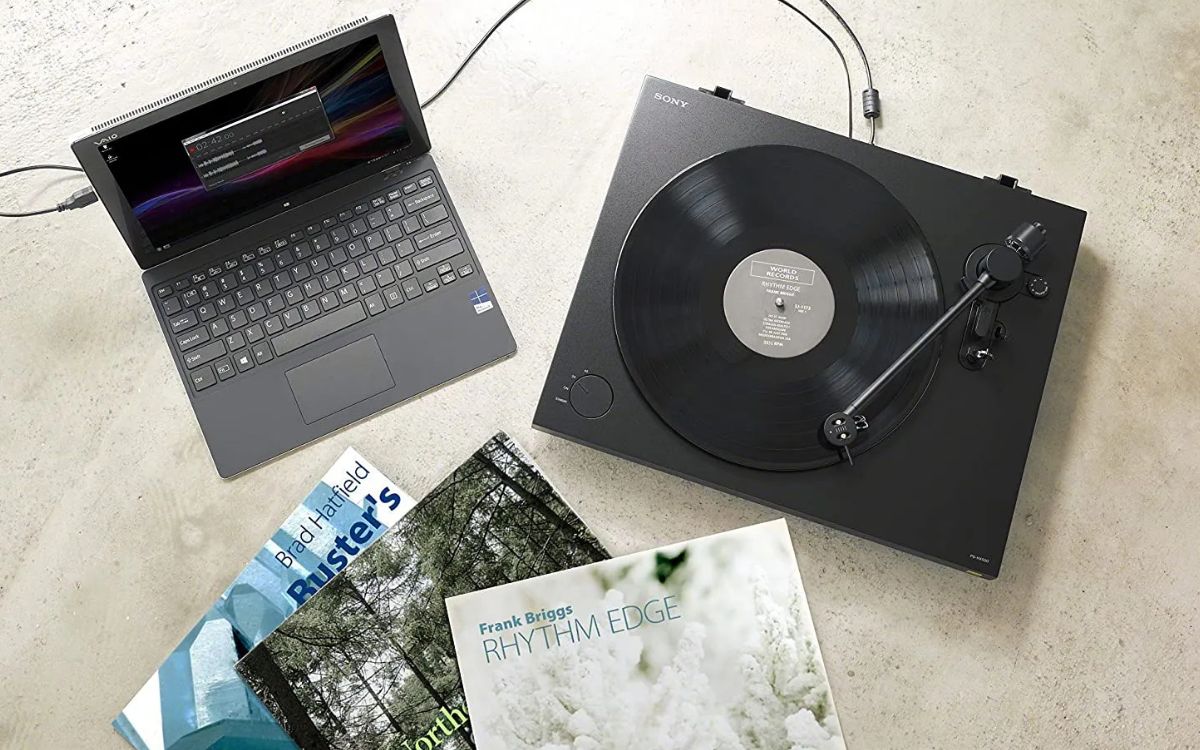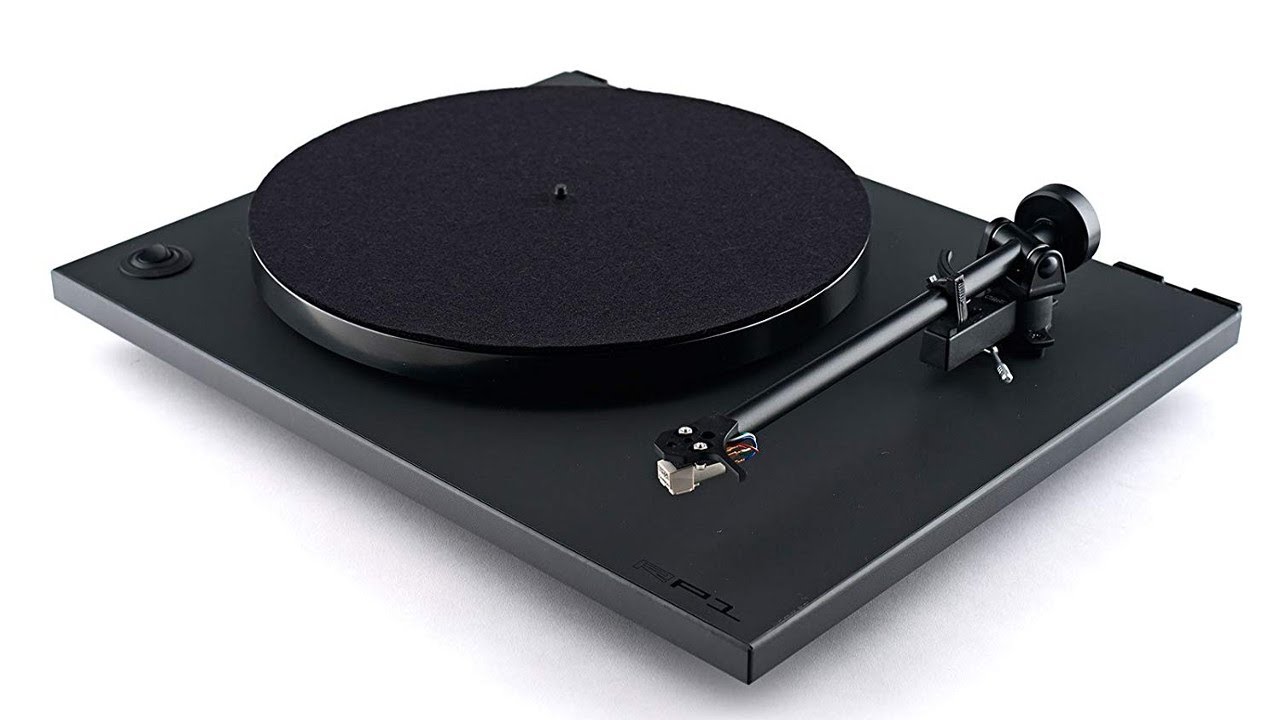Home>Production & Technology>Vinyl>How Much Music Can Fit On A Vinyl


Vinyl
How Much Music Can Fit On A Vinyl
Published: December 9, 2023
Discover how much music can fit on a vinyl record and explore the unlimited possibilities of this timeless format. Buy and collect vinyl records for an unparalleled listening experience.
(Many of the links in this article redirect to a specific reviewed product. Your purchase of these products through affiliate links helps to generate commission for AudioLover.com, at no extra cost. Learn more)
Table of Contents
Introduction
Vinyl records have been a staple in the music industry for decades, captivating audiophiles and music enthusiasts with their rich sound and iconic physical presence. In an era dominated by digital streaming and portable devices, the resurgence of vinyl records demonstrates the timeless appeal and nostalgia associated with this analog format.
However, one common question that arises among vinyl record collectors and music lovers is how much music can actually fit on a vinyl record. The answer to this question depends on various factors, including the specifications of the vinyl record itself.
In this article, we will delve into the history of vinyl records, explore their specifications, and examine the factors that affect the amount of music that can fit on a vinyl record. Whether you are a vinyl enthusiast looking to expand your collection or a curious music lover interested in the inner workings of vinyl records, this article aims to provide you with a comprehensive understanding of the capacity of vinyl records.
History of Vinyl Records
The history of vinyl records dates back to the late 19th century when Emile Berliner introduced the Gramophone, a device capable of playing flat discs made of shellac. These early records had limited playing time due to their large size and restricted grooves.
However, it wasn’t until the 1940s that vinyl records as we know them today were developed. Vinyl records are made from a synthetic plastic called polyvinyl chloride (PVC), which offered several advantages over previous materials. Vinyl records were lighter, more durable, and allowed for greater sound fidelity.
Vinyl records gained widespread popularity in the 1950s and 1960s, becoming the dominant format for music consumption. They allowed artists to release albums with multiple songs, enabling the emergence of concept albums and artistic storytelling through music. Vinyl records became a symbol of the music industry, with their iconic album covers and large format adding to the immersive experience of enjoying music.
However, with the advent of compact discs (CDs) in the 1980s and the subsequent rise of digital music, vinyl records experienced a decline in popularity. Many believed that vinyl would become obsolete, but dedicated collectors and audiophiles kept the format alive. In recent years, vinyl records have made a remarkable comeback, as a new generation discovers the charm and unique sonic characteristics of vinyl.
Today, vinyl records continue to be produced, both by independent artists and major labels, catering to a dedicated and passionate community of vinyl enthusiasts. The history of vinyl records serves as a testament to the enduring appeal of physical music formats and the timeless art of album listening.
Vinyl Record Specifications
Vinyl records come in various sizes and specifications, each designed to accommodate different types of music and playback equipment. Understanding these specifications is essential to grasp the capacity of vinyl records.
One important aspect of vinyl records is the groove size and length. The grooves on a vinyl record contain the analog audio information that is reproduced when the record is played. The size and length of these grooves directly impact the amount of music that can fit on a record. Typically, smaller groove size allows for more music to be packed onto a single side of a record, while longer grooves can accommodate songs with greater duration.
The standard sizes for vinyl records are 7-inch, 10-inch, and 12-inch. The 7-inch records, also known as singles, are typically used for shorter songs or one-hit wonders. The 10-inch records offer a slightly larger playing area and are often used for EPs or singles with extended tracks. The 12-inch records are the most common size for albums and allow for the most significant amount of music.
In addition to groove size, the thickness of a vinyl record also plays a role in its capacity. Most vinyl records have a thickness of around 1.5 to 2.5 millimeters. Thicker records can accommodate more grooves, which translates to a longer playing time.
Furthermore, the speed at which a vinyl record is played affects its music capacity. The standard speeds for vinyl records are 33 1/3 RPM (revolutions per minute) and 45 RPM. Records played at 33 1/3 RPM generally offer greater music capacity due to the slower rotational speed, while those played at 45 RPM often have shorter playing times but can provide enhanced audio fidelity.
Understanding the specifications of vinyl records is crucial in determining their music capacity. From groove size and length to record size and speed, these factors all contribute to the amount of music that can be stored on a vinyl record.
Groove Size and Length
The groove size and length of a vinyl record are fundamental factors that determine how much music can fit on a record. The grooves on a vinyl record contain the microscopic physical representation of sound waves and are responsible for reproducing the audio when the record is played.
The size of the grooves directly affects the amount of music that can be packed onto a single side of a vinyl record. Smaller grooves allow for more music to be squeezed onto the surface, while larger grooves require more space and result in a shorter playing time.
The length of the grooves is determined by the duration of the songs recorded on the vinyl record. Longer songs require more groove length to capture all the audio information, which reduces the available space for other tracks. On the other hand, shorter songs or those with extended gaps between tracks allow for more music to be fit onto a single side of the record.
It’s worth noting that the physical size of the vinyl record also plays a role in determining the maximum groove length. Larger records, such as 12-inch LPs, have more surface area, allowing for longer grooves and consequently more music to be stored. This is one of the reasons why albums are often released on 12-inch vinyl, as it offers a larger canvas for artists to express their musical ideas.
However, it’s important to strike a balance between groove size and length to maintain audio quality. If the grooves are too tiny or the length is excessively long, the amount of audio information packed into each groove may be compromised, resulting in a reduction in audio fidelity and potentially affecting the overall listening experience.
Ultimately, the groove size and length of a vinyl record are essential considerations when determining the capacity of the record. By carefully managing these factors, record manufacturers can optimize the music content on a record, striking a balance between playing time and audio quality.
Size and Thickness of Vinyl Records
The size and thickness of a vinyl record are crucial factors in determining its capacity. Vinyl records come in various sizes, with the most common being 7-inch, 10-inch, and 12-inch records. The size of the record directly impacts the available surface area for grooves, which in turn affects the amount of music that can be stored.
7-inch vinyl records, often referred to as singles, are typically used for shorter songs or one-hit wonders. Due to their smaller size, they have limited surface area for grooves and, therefore, can accommodate less music compared to larger-sized records.
10-inch vinyl records offer a slightly larger playing area than 7-inch records. They are commonly used for extended play (EP) releases or singles with longer tracks. The additional surface area allows for more grooves to be etched onto the record, resulting in increased music capacity.
12-inch vinyl records are the most common size for albums. With a larger surface area, they offer the most significant amount of space for grooves, allowing for longer playing times and more extensive tracklists. This makes them ideal for full-length albums that contain multiple songs.
In addition to size, the thickness of a vinyl record also affects its capacity. Most vinyl records have a thickness of around 1.5 to 2.5 millimeters. Thicker records can accommodate deeper and wider grooves, allowing for more music to be stored on each side. However, it’s important to find a balance between thickness and durability. Records that are too thin may risk being fragile and prone to warping, while records that are too thick may have reduced audio fidelity.
Record manufacturers carefully consider both the size and thickness of vinyl records to optimize the capacity while maintaining audio quality and durability. These factors, along with other specifications such as groove size and playing speed, contribute to the overall music capacity of vinyl records.
Vinyl Record Storage Capacity
The storage capacity of a vinyl record refers to the total amount of music that can be stored on the record’s surface. This capacity is determined by various factors, including groove size, length, record size, and playing speed.
The size and length of the grooves directly impact the storage capacity of a vinyl record. Smaller grooves allow for more music to be packed onto the surface, while longer grooves accommodate songs with greater duration. Additionally, the physical size of the record plays a role in the storage capacity. Larger records like 12-inch LPs have more surface area, allowing for longer grooves and consequently more music to be stored.
The playing speed of a vinyl record also affects its storage capacity. The standard record speeds are 33 1/3 RPM and 45 RPM. Records played at 33 1/3 RPM typically have a longer playing time and therefore can fit more music. In contrast, records played at 45 RPM have shorter playing times but can provide enhanced audio fidelity.
It’s important to note that the storage capacity of a vinyl record can vary depending on the format. For example, a 7-inch single typically holds one song on each side, while a 12-inch album can hold multiple tracks on each side. EPs or extended play records fall in-between, offering a longer playing time compared to singles but less than full-length albums.
When determining the storage capacity of vinyl records, it’s essential to consider the limitations of the format. Vinyl records have a maximum playing time beyond which the audio quality may be compromised. Playing a record with excessive music squeezed onto each side can lead to reduced audio fidelity, an increase in surface noise, and potential skipping issues.
Therefore, record producers and artists carefully plan the tracklist and allocate the available space on a vinyl record to ensure optimal sound quality and a satisfying listening experience. The storage capacity of vinyl records, while limited in comparison to digital formats, continues to captivate music enthusiasts with its charm, collectability, and unique sonic characteristics.
Factors Affecting Music Capacity on Vinyl
Several factors come into play when determining the music capacity of a vinyl record. These factors influence how much music can be stored on a single side of the record and are crucial considerations for both record producers and vinyl enthusiasts.
One of the primary factors is the groove size and length. Smaller grooves allow for more music to be packed onto the surface, while longer grooves can accommodate tracks with greater duration. The balance between groove size and length is crucial to maintain audio quality and prevent overcrowding of the grooves, which can result in a reduction of sound fidelity.
The size of the vinyl record is another critical aspect that affects music capacity. Generally, larger records, such as 12-inch LPs, offer more surface area for grooves, allowing for longer tracks and more extensive tracklists. Smaller records like 7-inch singles have limited space for grooves and therefore can store less music. The decision to release an album or single on a specific-sized record depends on the artist’s vision and the desired playing time for the release.
Playing speed is also a factor in music capacity. Records played at 33 1/3 RPM typically have a longer playing time and can fit more music, while records played at 45 RPM have shorter playing times but can provide enhanced audio fidelity. The choice of playing speed depends on the intended sound quality and the desired balance between capacity and sonic characteristics.
Furthermore, the thickness of the vinyl record influences its music capacity. Thicker records can accommodate deeper and wider grooves, allowing for more music to be stored on each side. However, excessively thick records may have difficulties fitting on turntables or may risk compromising audio fidelity. Finding the right balance between thickness and practicality is crucial in maximizing the music capacity of a vinyl record.
Lastly, it is important to consider the duration and arrangement of the songs themselves. Longer tracks or compositions require more groove length, leaving less space for additional songs. Artists and producers carefully plan the tracklist for a vinyl record, considering the available space and ensuring a cohesive listening experience.
By taking into account these factors – groove size and length, record size, playing speed, thickness, and track arrangement – record manufacturers and artists can optimize the music capacity of vinyl records. Balancing these elements allows for the preservation of audio quality and ensures that vinyl enthusiasts can enjoy a satisfying and immersive listening experience.
Vinyl Record Playing Speed
One important factor that affects the capacity of a vinyl record is the playing speed. The standard playing speeds for vinyl records are 33 1/3 RPM (revolutions per minute) and 45 RPM. The choice of playing speed directly influences the amount of music that can fit on a record.
Records played at 33 1/3 RPM typically have a longer playing time compared to those played at 45 RPM. At the slower rotational speed, the needle on the turntable moves more slowly across the grooves, allowing for more music to be stored on each side of the record. This is particularly advantageous for albums with longer tracks or albums that contain a significant number of songs.
On the other hand, records played at 45 RPM have a faster rotational speed, resulting in a shorter playing time. This speed is often associated with singles or EP releases, where the focus is on a smaller number of tracks or higher audio fidelity. The faster speed allows for a more detailed reproduction of the music but sacrifices the playing time that can be accommodated on the record.
The choice of playing speed depends on various factors, including the desired sound quality, track arrangement, and the overall concept of the release. Artists and producers carefully consider these factors when deciding on the appropriate playing speed for a vinyl record.
It is worth noting that the playing speed affects not only the music capacity of the vinyl record but also the sound quality. Slower speeds generally result in less surface noise and improved bass response, while faster speeds can offer enhanced detail and clarity in the audio reproduction.
Additionally, it is important to consider the compatibility of the record player or turntable with different playing speeds. Most modern turntables have the ability to switch between 33 1/3 RPM and 45 RPM speeds, allowing for versatility in playing different types of vinyl records. However, older or more specialized turntables may only support one or the other, limiting the playing options.
In summary, the playing speed of a vinyl record directly affects its capacity by determining the amount of music that can fit on each side. The choice between 33 1/3 RPM and 45 RPM comes down to factors such as track duration, desired sound quality, and the overall vision for the release. By considering these factors, artists and producers can optimize the playing time and sound quality of vinyl records, delivering a compelling and enjoyable listening experience for vinyl enthusiasts.
Conclusion
The capacity of vinyl records to store music is influenced by various factors, including groove size, length, record size, playing speed, and track arrangement. Understanding these factors is essential for both record manufacturers and vinyl enthusiasts.
Vinyl records have a long and rich history, captivating music lovers for decades with their iconic sound and tangible presence. The size and thickness of the record, along with the groove size and length, directly impact the amount of music that can be stored. Larger records, such as 12-inch LPs, offer more surface area, allowing for longer grooves and more music. Additionally, playing speed plays a role in determining the music capacity, with slower speeds like 33 1/3 RPM accommodating more music than faster speeds like 45 RPM.
Factors such as track duration and arrangement further influence the amount of music that can fit on a vinyl record. Careful planning and consideration of the available space on each side of the record ensure optimal sound quality and a satisfying listening experience.
Vinyl records continue to thrive in the modern music landscape, appealing to audiophiles, collectors, and music enthusiasts alike. Their unique sonic characteristics and physical presence offer a nostalgic and immersive way to experience music. While vinyl records may have limitations in terms of music capacity compared to digital formats, they make up for it with their charm, collectability, and enduring appeal.
As vinyl makes a resurgence in popularity, understanding the capacity of vinyl records allows both artists and listeners to make informed decisions when it comes to track selection, album length, and overall presentation. By balancing the various factors that affect music capacity, record manufacturers and artists can create vinyl records that provide an authentic and captivating listening experience.
Whether you are a vinyl enthusiast expanding your collection or a curious music lover delving into the world of vinyl records, this guide provides insights into the factors that shape the capacity of these iconic music formats. So, grab your turntable, put on your favorite record, and enjoy the unique experience that vinyl records have to offer.











